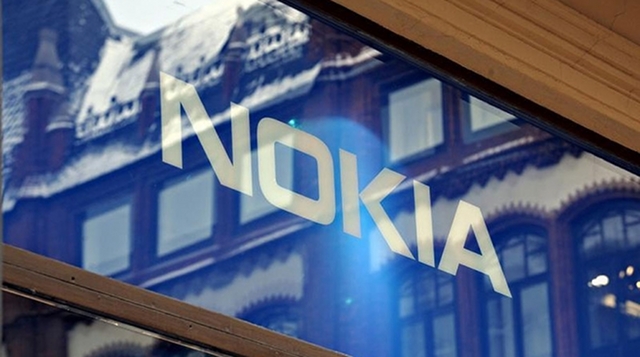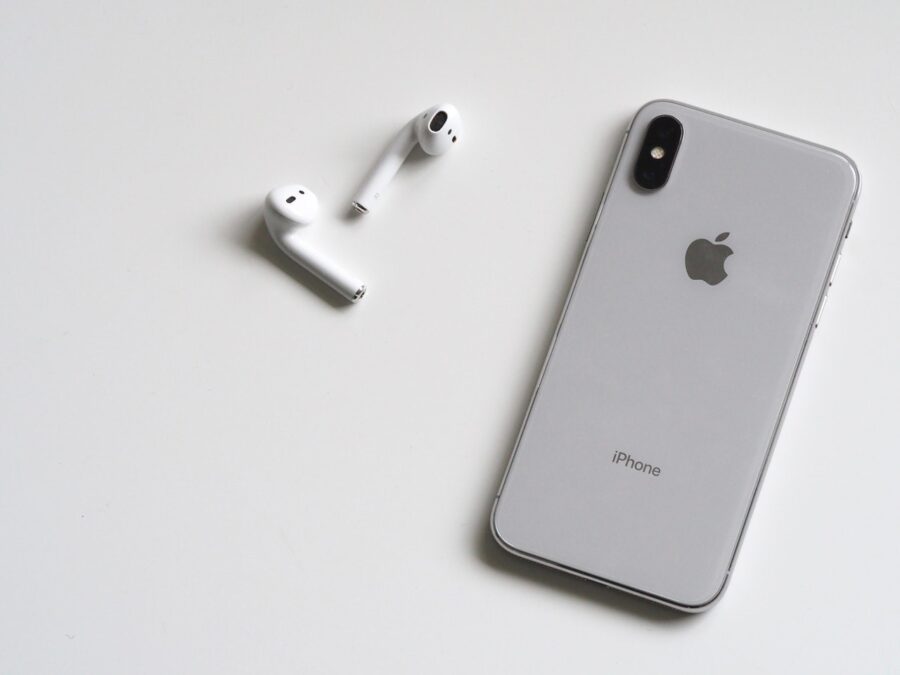The present fight over the new era of the mobile phone industry might one day make a classic case study for business school undergraduates. The roll out of high-speed wireless data networks is triggering a struggle between the rival cultures of European engineering and US marketing flair.
More than that, however, it is leading to a confrontation between two alternative business philosophies: a vertically integrated mobile-phone industry versus a horizontal supply chain populated by the giants of the IT industry.
This ‘clash of civilisations’, as analysts at Nomura, the Japanese investment bank, are calling it, comes at the end of a 10-year period in which Nokia, Europe’s biggest technology company, had things pretty much its own way. In the early 1990s, it was a struggling conglomerate that was seen as a natural acquisition target for one of Asia’s electronics giants – in fact, it is often said that many people simply assumed that Nokia was Japanese. But by the end of the decade, its Finnish identity was strong and it had grown so big and powerful that even Bernie Ebbers, CEO of US telecom giant WorldCom, would have thought twice about a takeover bid.
Today, Nokia is the world’s leading manufacturer of mobile phones; one of the main suppliers of network equipment, behind Ericsson of Sweden, the market leader; and has a rapidly expanding software division (see box, Nokia’s businesses).
|
||
In 2001, the company had sales of EU31.2 billion, cash and equivalents of EU6.1 billion and pre-tax profits worth EU5.2 billion by the end of 2001.
In fact, Interbrand, the brand consultancy, named Nokia the world’s fifth most valuable brand after Coca-Cola, Microsoft, IBM and Intel. Indeed, the hackneyed story of a 137-year-old former paper mill operator riding the telecommunications wave of the 1980s and 1990s has come to represent a European success story without parallel in the US-dominated hi-tech industry.
But there is a growing conviction among industry commentators that the Finnish company’s glory days may be behind it. Industry sources say that relations between Nokia and its operator clients are at an all-time low. The common complaint: that Nokia has begun to abuse its dominant position in the handset supply market. Competition among manufacturers is fiercer than ever and many key markets are becoming saturated. The third-generation (3G) technology that Nokia is partly betting its future on – wideband code-division multiple access (WCDMA) – is losing ground to alternative wireless networking technologies, such as CDMA2000 and 802.11. And then there is the looming presence of Microsoft.
Jorma Ollila, CEO of Nokia, does not seem unduly concerned. “We see ourselves as very competitively positioned to lead the industry into the next mobile communications growth phase,” he says. The company’s president, Pekka Ala-Pietila, shares his boss’s confidence. Speaking at Nokia House, the company’s seafront headquarters on the outskirts of Helsinki, he too insists that Nokia will grow strongly in the coming years. “Mobile communications is a growth market. We will see longer-term growth,” he says. “Short-term impacts on the market have been over-estimated and long-term impacts have been under-estimated. Once something new in the industry has taken off it has always surprised all the parties involved. And that will be the case again.”
Some equate such self-confidence with complacency, however. “Nokia could be facing several years of no to slow growth,” wrote Nomura analyst Keith Woolcock in a recent ‘sell’ note, titled ‘The twilight of the gods’. “In our view the company is at a turning point and faces the threat of a long and painful decline,” he added.
Warning from history
Many analysts believe there are parallels between the situation facing Nokia today and the then mainframe giant IBM’s ill-fated strategy to dominate the embryonic PC market 20 years ago. It is a contentious view that has its detractors, not least among Nokia executives. But sources close to the company report that many rank-and-file engineers have recognised the similarities and are worried.
It is certainly a story that will be familiar to industry veterans. IBM changed its computer production philosophy from one of vertical integration to a horizontal supply chain model – a decision often cited as the biggest mistake in the history of the high-tech industry.
IBM’s rationale was that building everything in-house was taking too long. It wanted to quicken its speed of innovation in order to overtake nimbler rivals, most notably Apple. So IBM used microprocessors from Intel and a simple operating system from Microsoft, and based its PC on an open architecture that could support a range of third-party components, subsystems and software.
The policy succeeded, insofar as IBM dominated the PC market for the remainder of the 1980s. But by speeding the rate of innovation, IBM also accelerated the process of turning the PC into a commodity item. Realising its mistake, it tried to reinvent the vertical integration model. But the launch several years later of the proprietary PS/2 desktop computer was an embarrassing failure. IBM’s profits collapsed, threatening the very survival of the company. Meanwhile Intel, Microsoft and other start-ups grew rapidly by capturing the most valuable segments of the PC supply chain.
Today, the mobile phone value chain is still largely vertically integrated. But possibly not for much longer. One of the defining characteristics of 2002 has been the willingness of hard-pressed manufacturers to generate a new revenue stream by touting their protocol software, platforms, user interfaces and reference designs on the open market. These extremely complex technologies have, until now, represented significant barriers to new entrants, helping to concentrate the mobile phone industry’s power in a handful of companies.
Nokia, somewhat surprisingly, is driving this trend. It already has three licensees – Siemens of Germany, Samsung of South Korea and Mitsubishi of Japan – for its ‘series 60’ smartphone platform. These deals may ultimately bring Nokia substantial licence fees. But, by making it easier for rivals to quickly bring advanced handsets to market, the company runs the risk of voluntarily eroding its own market share.
Such deals are not yet reciprocal. Like IBM before it, Nokia may be helping to create a horizontal supply chain, but it remains a vertically integrated company, outsourcing less than one-fifth of its production to third parties.
For example, the Finnish giant still writes the software that handles the interaction between its handsets and the radio network. Its low-end phones contain Nokia-developed operating systems, while the remainder carry platforms designed by the Symbian alliance, of which it is a founding member. Nokia also designs its own radio receivers and transmitter. It builds mobile applications and is acquiring mobile Internet content – to the dismay of its carrier clients. And it has developed client and server software that securely connects devices to corporate networks. Virtually the only thing it does not do is design and manufacture its own microprocessors.
The strategy may have its critics, but there are certainly compelling reasons for building vertical integration in the wireless industry.
For one thing, there are opportunities to create hidden lock-ins by selling products containing elements of proprietary technology.
Vertical integration can also create greater efficiencies. Alan Thompson, the UK managing director of Japanese electronics giant Toshiba, and a self-confessed admirer of Nokia and its strategy, says: “It is a business model that works if you want to create massive economies of scale. I am not knocking Nokia. It is a very good business model, particularly if you are trying to eke out those last bits of cost.”
Thirdly, vertical integration goes some way to solving the enormous complexity involved in making handsets and networks capable of communicating with each other. Interoperability between devices and base stations made by different companies, so the argument goes, would be an even bigger issue than it already is if the hardware and software from end-to-end was not supplied by the same company.
It is a view that Ala-Pietila wholeheartedly supports. “Offering voice end-to-end is challenging but it is nothing as complex as providing end-to-end mobile multimedia,” says Nokia’s president. “Having the network understanding and the middleware understanding and the terminal understanding is absolutely key to driving growth in the future.”
The complexity of handset technology makes this market unlike other consumer-electronics sectors, which commoditised rapidly. But the counter-argument is that manufacturing complexity will only postpone, rather than prevent, a collapse in margins. And, in any case, much of this complexity is being removed by vendors’ new willingness to trade their secrets with third parties.
“It will be hard to maintain high margins in a horizontal industry,” writes Nomura’s Woolcock in his recent report. “With the key parts of the mobile phone, even the complex 3G protocol stack, now available on the open market, competition and the velocity of innovation will increase considerably.” That could spell disaster for Nokia, he says. “Up to now the mobile phone industry has marched in lockstep behind Nokia. If our argument is right, the followers are poised to break rank and jog off into the distance.”
The end game
But out of which segment of the supply chain will those ‘followers’ break? As the gradual shift to a horizontal supply chain reaches what economists call a ‘tipping point’, changing the dynamics of the mobile industry forever, it may even be that a little-known company emerges to usurp Nokia’s crown.
In the computer industry, as IBM found to its cost, the greatest value is not to be found in hardware production. In the wireless industry, many analysts believe the long-term value will not exist in making compatible networks and devices.
Instead, they say, the biggest margins might be found in application development, application management, network management software, security software, roaming software, billing systems and possibly even battery manufacture. Nokia is working on some of those. But it may discover that it has neither the expertise nor the agility of a smaller supplier dedicated to a particular segment of the value chain.
Mike Short, chairman of the Mobile Data Association and a director of o2, the BT-backed mobile network operator, firmly believes that the mobile industry is at a watershed and that vertical integration is going to be harder to maintain.
“The change, I would argue, is already well underway,” he says. “The proportion of [carriers’] revenues are moving from voice to data, and we expect to see significant numbers of new players responding to that. We are going to have fewer vertically integrated companies and greater numbers of partnerships relying on specialties.” He says the winners in the next generation of the mobile industry might range from application developers to service providers, systems integrators to IT companies – but they will have one thing in common: specialisation.
So where does that leave Nokia? Some analysts believe it is time for the Finnish company to cast off its vertical-integration philosophy completely. It could start by selling off its network division, they argue, which is beginning to struggle by Nokia’s standards. But concentrating on handset development could be a dangerous move, potentially transforming Nokia into the Dell Computer of the wireless industry. Nokia’s operating margins are currently about 22%; Dell’s, although large by PC standards, are just 7%.
An alternative view is that Nokia should swallow its pride and strike an unlikely alliance with Microsoft. In one admittedly far-fetched scenario, Nokia would agree to back Microsoft’s .Net family of web services technologies. Microsoft may agree to stop developing wireless operating systems as part of the deal. (Nokia has so far chosen to team up with IBM and Sun in supporting Java 2 Micro Edition, or J2ME, the wireless version of the Java programming language and software platform.)
But Nokia executives remain sceptical of backing .Net, given the inherent risks involved in welcoming Microsoft to the mobile industry’s top table. “We only support those standards that are supporting open interfaces. That is why we are not prepared to support any proprietary aspects of .Net,” says Pertti Korhonen, senior vice-president of Nokia’s mobile software division.
But there is a third option available to Nokia. The company could raise investment in software development even further, ramp up its IT services business and outsource the handset manufacturing process, possibly to Flextronics of Singapore, which already makes phones for some of Nokia’s competitors.
But Nokia does not want to be thought of as the new IBM. Nor, for that matter, does it plan to ditch hardware. “Nokia is a product company. Software is part of that but we are not looking to become a [pure] software company,” says Johan Schmidt, a company vice-president.
Instead, Nokia, seemingly, will carry on being Nokia – vertically integrated, close-knit, fervently Finnish and an enemy of Microsoft.
A decade ago, the company grew rapidly because it anticipated the sea change the industry was about to go through. Analogue networks were superseded by digital systems, cumbersome devices were replaced by fashion accessories, and Nokia cornered the market. Now, it is in danger of playing the role of the obstinate one. And this time it could be its rivals that react the quickest.
|
|||||||||||||||||||||||






